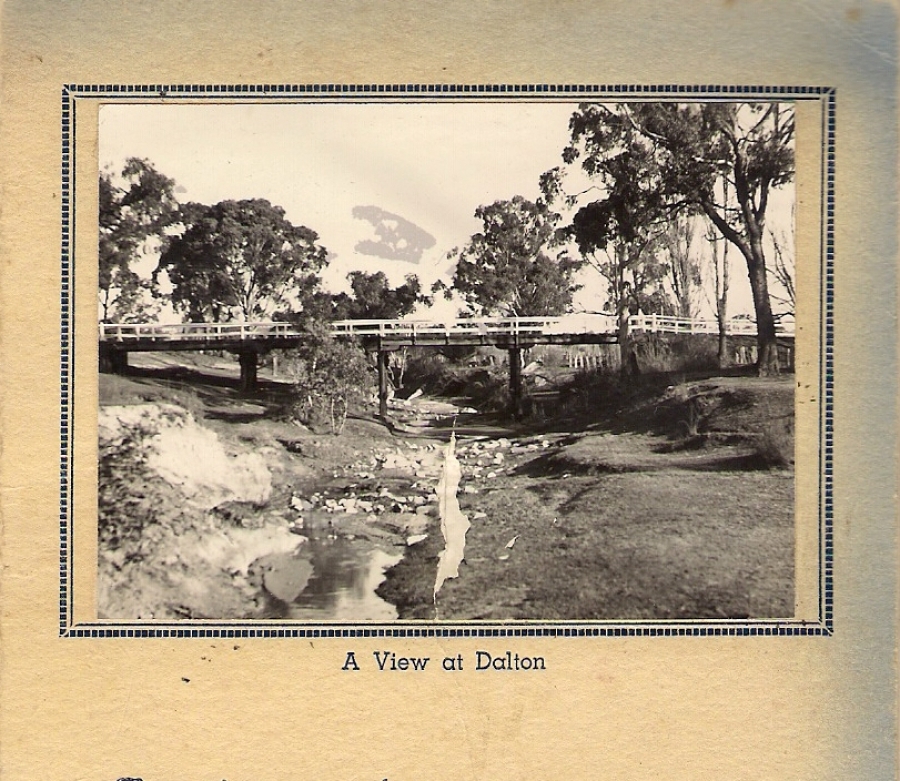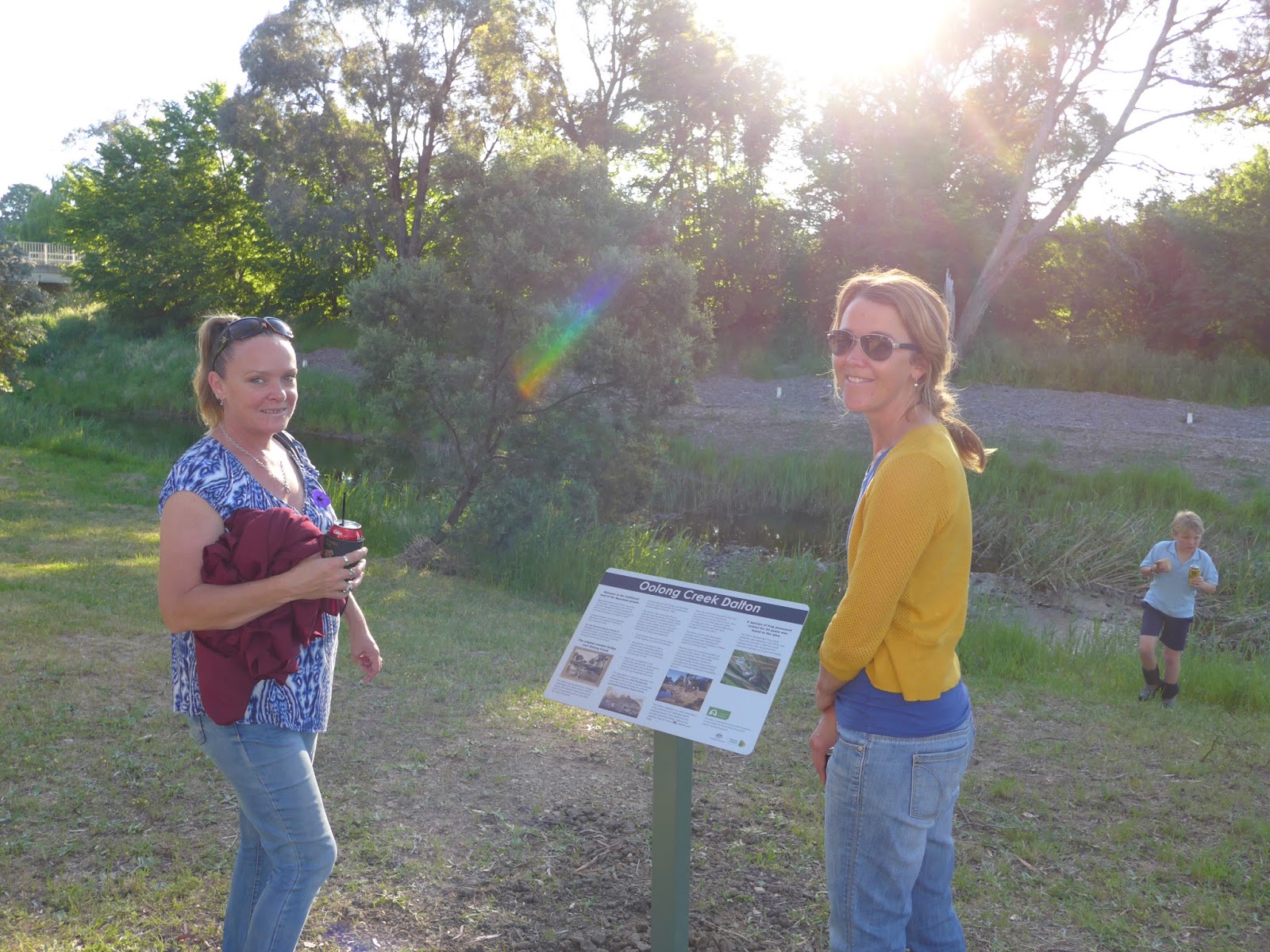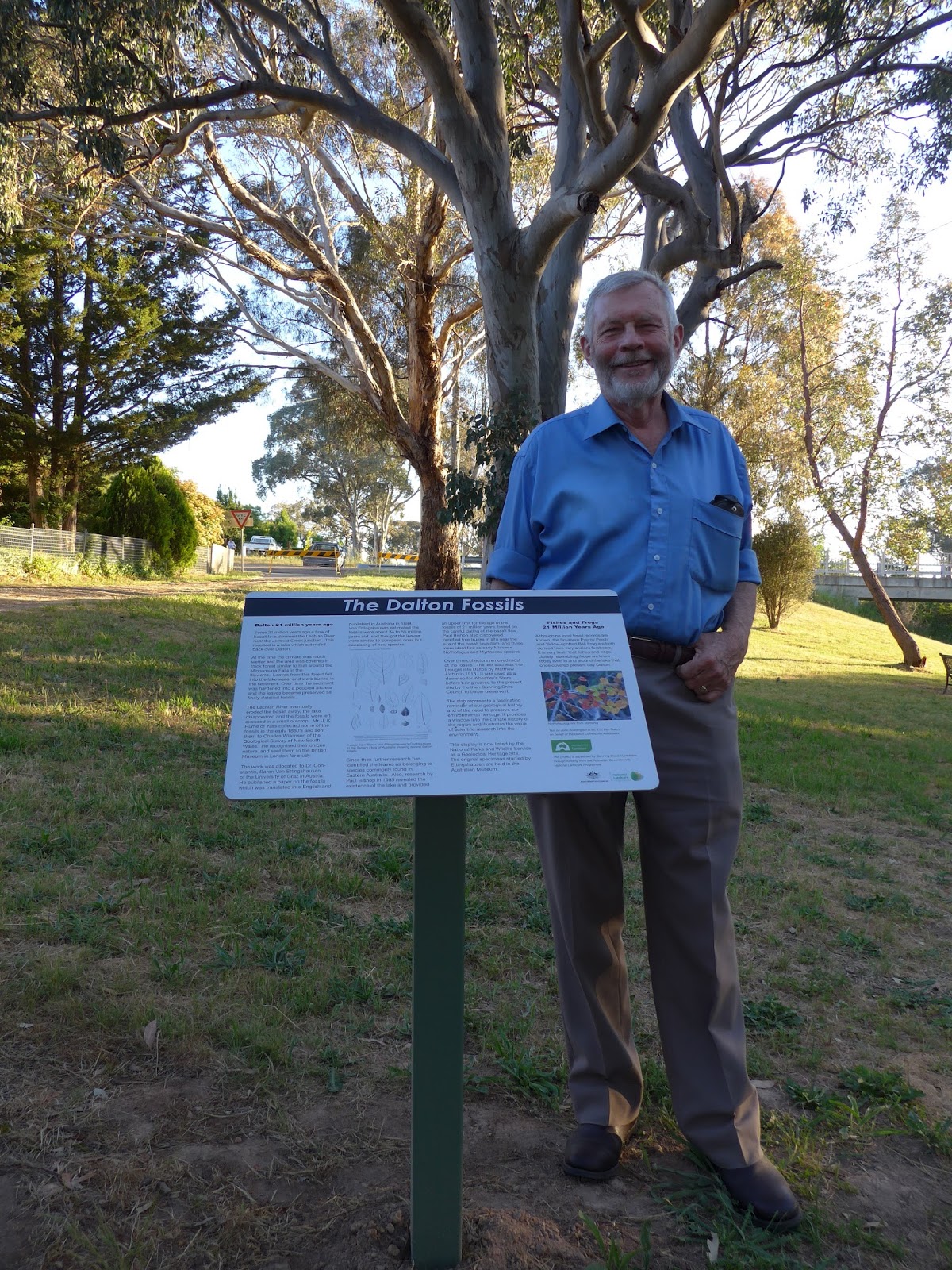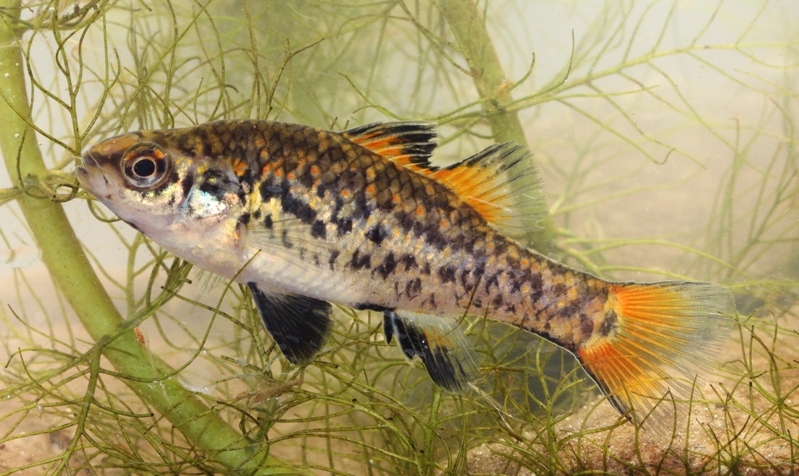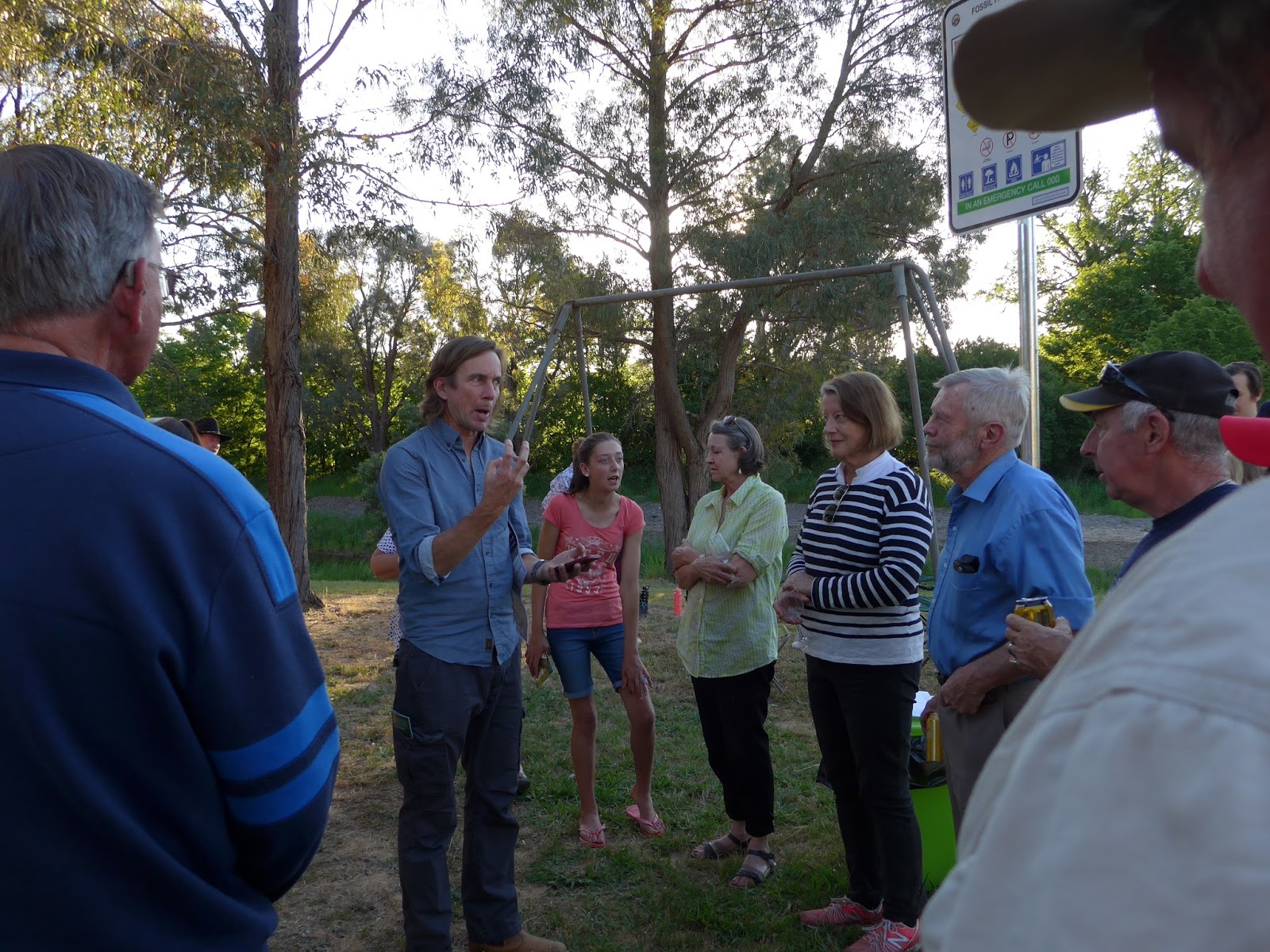Some 45 or more adults and unnumbered kids turned out on a delightful late Friday afternoon on Remembrance Day for the official opening of the two groups’ revegetation project on the banks of the Oolong Creek at the Dalton Fossil Park. Maree Dowling and Bob Spiller were pleased to congratulate the efforts of locals in the two organisations for their efforts. Oolong Creek flowed gently through deep and shallow pools, and rippled over shallows, the plantings had shot upwards.
Earlier in the year members of the two associations had worked hard to remove woody weeds from the site and replaced them with native trees, shrubs and grasses provided by Greening Australia.
For a great occasion like an official opening you would traditionally call on the Governor-General or Mayor to be the distinguished guest. We went for three local dignitaries – Cassie Dowling and Kelsey Medway, who have earned their place in history as discoverers of the Oolong Creek Southern Pygmy Perch, were joined by local geologist John Boddington in officially unveiling two new interpretative signs that were created for the site.
Dalton geologist John Boddington, author of this sign which explains the significance of the Dalton fossil rock. John’s sign replaces an earlier one which modern scientific evidence has shown to be wrong. This photo is taken after the official opening.
The two young “citizen-scientists”, Cassie and Kelsey, spoke of searching the muddy, stagnant ponds before the makeover, looking for mosquito fish (gambusia, a destructive introduced species). To their surprise and pleasure, the samples they captured were of an altogether different species –part of a population of a hitherto unknown highly endangered Southern Pygmy Perch.
Southern Pygmy Perch. This nine centimetre long perch was once so common a 1970s fishing guide recommended it as live bait for trout. Now it is found in only three places in NSW including right here in Oolong Creek. Gunning District Landcare has engaged three experts from the CSIRO and academia to develop a local Recovery Action Plan for this endangered fish.
Rod Pietsch, from NSW Office of Environment and Heritage [OEH], commended the young discoverers for taking a keen interest in their local environment and suggested a great future awaited them should they pursue careers as naturalists working on endangered species. People gifted in finding species thought to be extinct would be a great asset to OEH.
As he is also a “Frog Expert,” Rod talked about the Yellow Spotted Bell Frog, once common in the local area and illustrated the lovely frog. He was able to answer audience questions such as, Why do frogs call? Answer: males only call, to define territory and to invite females to visit!
Of course, that lead to requests for a demonstration of its call, which he claimed he could not do. However, both Rod and a visitor played the calls from their phone apps, showing that the description of a “motor bike” frog might go some way to hinting at the sound.
Opening Ceremonies Yesterday and Today
The original bridge pictured at the beginning of this article was officially opened in August 1896. The ceremony began with the Dalton School children singing the National Anthem. This was followed by picnic amusements such as Jolly Miller and Pass the Parcel.
Dalton School children were again the featured act, reprising their ever popular National Anthem, at the opening ceremony for the grand new bridge in February 1988. The Mayor, together with Federal and State MPs and the cream of Dalton society turned out for this event which seems to have been an occasion of great delight judging by the photo below.

Photo courtesy Lisa Wiseman. Note local landcare stalwart Mary Walsh combining style and sun sense with elegant hat.
Flags, local MPs and national anthems did not feature in the most recent opening ceremony. Our official guest was Rod Pietsch from the Office of Environment and Heritage [OEH]. Rod highlighted the work being done to preserve two local treasures – the Yellow-spotted Bell Frog and Southern Pygmy Perch.
The Yellow-spotted Bell Frog
Once thought to be locally extinct, the Yellow-spotted Bell Frog was found alive and well in 2008 by Fisheries Manager Luke Pearce while searching for rare species of fish. However, their numbers are thought to be perilously low. This is why a captive breeding program has been running at Taronga Park and other actions being taken to protect this rare treasure.
A big emphasis on the work of GDL in our first year of operation has been on restoring our waterways and farmlands so that they are great for stock, great for wildlife and great for people too. We know that when we have healthy natural waterways endangered species like these little perches and frogs have a much better chance. And they are not the only beneficiaries - our sheep and cattle, our farms, our economy and our environment are also winners.
Rod reinforced this message. Production and the environment are intertwined. He also asked us to report any possible sightings or hearings of this endangered and frog. The more we know about where it might be the better will be able to preserve it for the future.
”It makes a scary machine gun like call just like this and would fit into the palm of my right hand” Rod Peitsch introduces us to the Yellow-spotted Bell Frog’s call
Rod is very keen to hear from anyone who thinks they may have seen the Yellow-spotted Bell Frog. Not long after he departed for home and we were finishing cleaning up we heard a very credible account of the frog’s presence from a Royal Dalton Hotel patron who had not been at the event. This has been reported to a delighted Rod who will be following up with our informant.
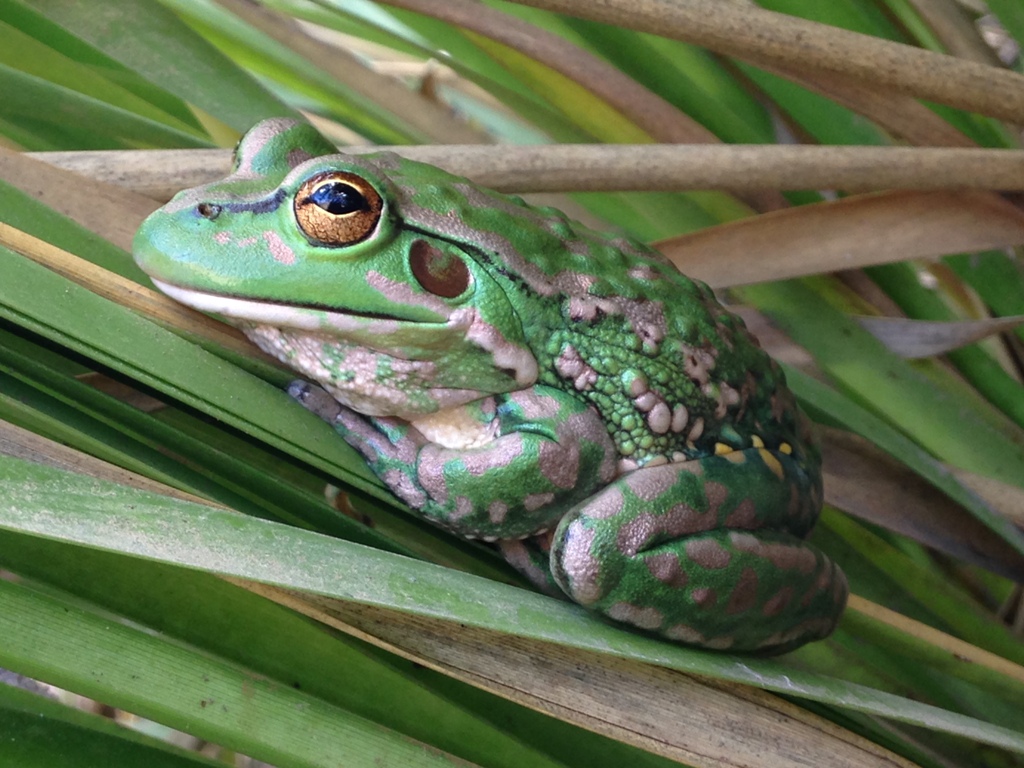
The Yellow-spotted Bell Frog can be recognised by the distinctive markings on its groin and thighs as well as its cal which has been likened to the sound of a machine gun.
If you think you have seen or heard a Yellow-spotted Bell Frog please let us know. You can contact Helen Ward at This email address is being protected from spambots. You need JavaScript enabled to view it. or on 0488 027 653 – or phone Bob on 48458217.


